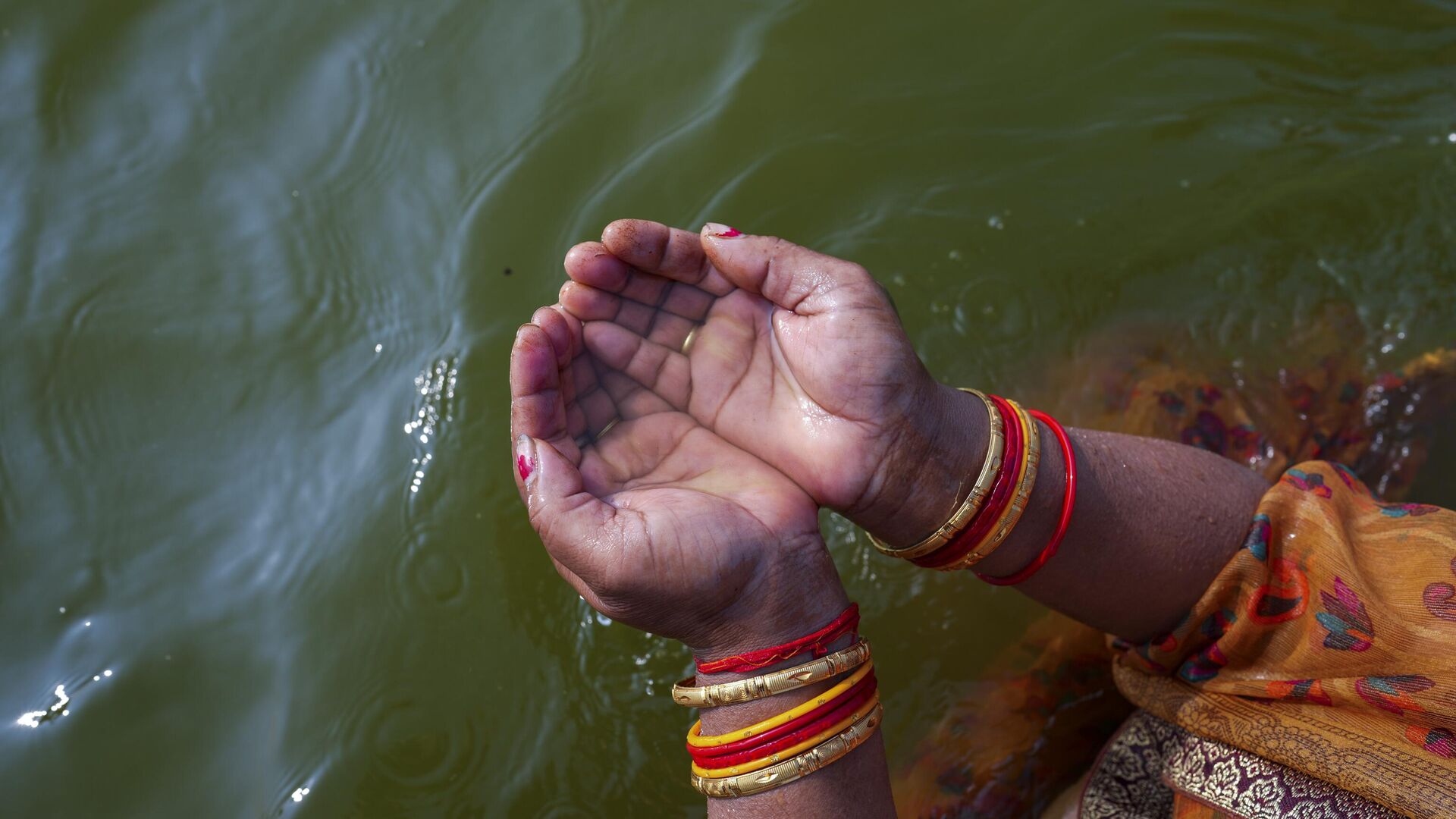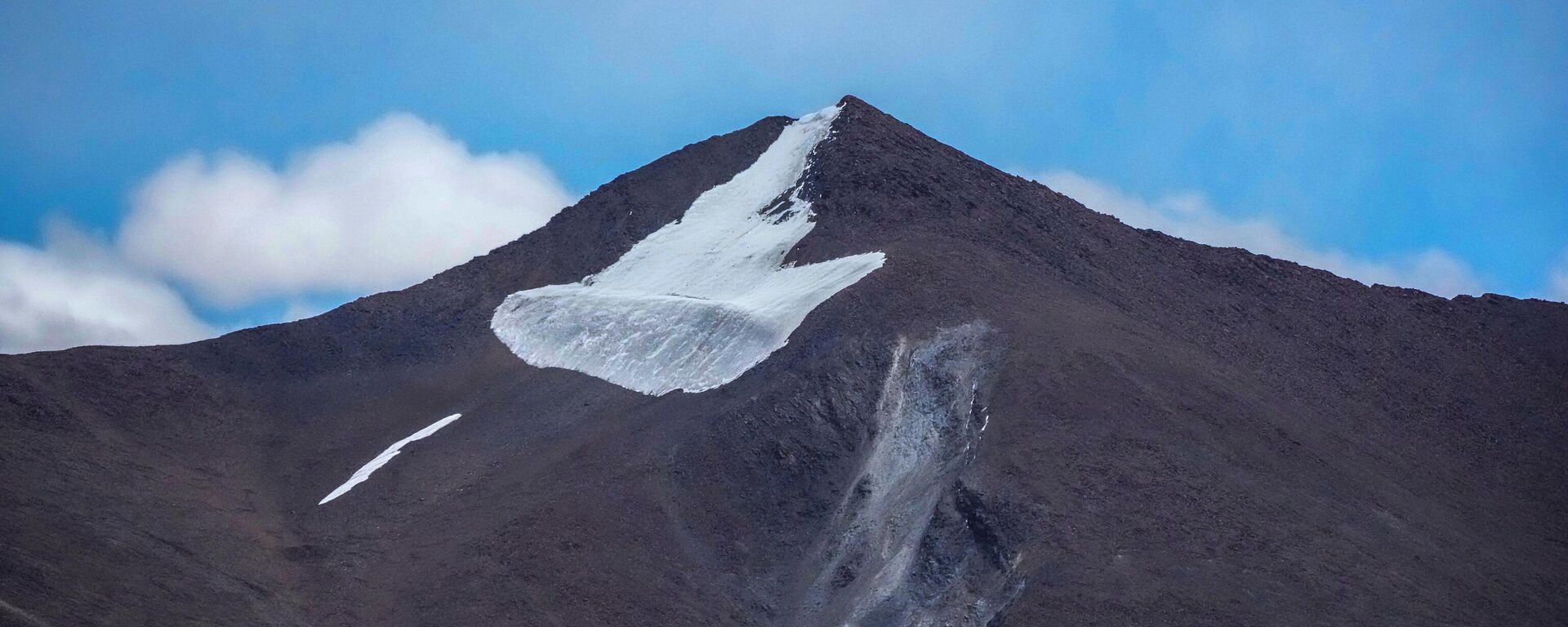https://sputniknews.in/20230417/india-offers-its-water-security-template-to-global-south-as-jal-shakti-abhiyan-takes-off-1577747.html
India Offers Its Water Security ‘Template’ to Global South as Jal Shakti Abhiyan Takes Off
India Offers Its Water Security ‘Template’ to Global South as Jal Shakti Abhiyan Takes Off
Sputnik India
India is ready to offer its expertise in water security and conservation to the developing countries in the Global South, Vini Mahajan, Secretary, Department of Drinking Water and Sanitation said.
2023-04-17T19:29+0530
2023-04-17T19:29+0530
2023-04-17T19:29+0530
india g-20 presidency
g-20
india
water contamination
global south
narendra modi
rural india
water scarcity
https://cdn1.img.sputniknews.in/img/07e7/04/11/1578875_0:160:3072:1888_1920x0_80_0_0_7b04d9f2d2cd1448316406b5ccb4d3b3.jpg
India is ready to offer its expertise in water security and conservation to the developing nations in the Global South.This was announced by Vini Mahajan, Secretary, Department of Drinking Water and Sanitation said, as she highlighted the significant strides made by PM Modi’s government in making tap water accessible to rural households since 2019.She said that New Delhi’s G20 presidency this year offers a great “opportunity” to showcase its achievements in the sector.Mahajan highlighted that India’s efforts towards making tap water available to its population are one of the “biggest interventions” in water security and water conservation globally.She noted that even though the lion’s share of the financial burden in getting new tap connections was being borne by the federal authorities, the utilization of funds was up to the state governments.Management of water resources in India is a “state subject”, the official underlined.India’s ‘Unprecedented Pace’ in Expanding Tap Water CoverageSince PM Modi launched the ‘Jal Shakti Abhiyan’ during his Independence Day speech in 2019, the share of rural households with access to tap water has increased from 16 per cent to nearly 60 per cent. Just over 32 million rural Indian households had a tap water connection in 2019, which increased to 117.62 millions in April 2023, as per official figures.She said that close to a million schools and another million rural day-care centers (anganwadis) have been providing access to tap water, in a significant boost to children health and rights.Before the scheme was announced, over 14,000 Indian habitations had water with high fluoride content and close to 8,000 of them had water with high fluoride content.Mahajan said that over 2,000 water-testing labs have been established across the country since 2019.She said that India was on its path to achieve the Sustainable Development Goal 6.1 (universal access to clean water) well ahead of 2030 deadline.What Are Social and Health Impacts of Jal Shakti Abhiyan?Mahajan said that societal and healthcare benefits of the government’s intervention were already being felt on the ground level.She said that there has been a significant increase in “water quality” and an overall decrease in water borne diseases.More to it, the scheme also aims to contribute to women empowerment in India: the Village Water and Sanitation Committees (VWSC) mandated under it are required to have 50% women members.Traditionally, women in Indian villages with limited or no access to water are tasked with fetching water from distant sources to meet the household needs. Regular supply of water relieved women and young girls from the “drudgery” of carrying heavy loads of water over long distances, Mahajan added.
https://sputniknews.in/20230323/himalayan-river-flow-likely-to-reduce-as-glaciers-recede-un-chief-1273331.html
india
global south
rural india
Sputnik India
feedback.hindi@sputniknews.com
+74956456601
MIA „Rossiya Segodnya“
2023
Dhairya Maheshwari
https://cdn1.img.sputniknews.in/img/07e6/0c/13/138962_0:0:641:640_100x100_80_0_0_2cb44360dbcdf6d84bf4b299cd045917.jpg
Dhairya Maheshwari
https://cdn1.img.sputniknews.in/img/07e6/0c/13/138962_0:0:641:640_100x100_80_0_0_2cb44360dbcdf6d84bf4b299cd045917.jpg
News
en_IN
Sputnik India
feedback.hindi@sputniknews.com
+74956456601
MIA „Rossiya Segodnya“
Sputnik India
feedback.hindi@sputniknews.com
+74956456601
MIA „Rossiya Segodnya“
Dhairya Maheshwari
https://cdn1.img.sputniknews.in/img/07e6/0c/13/138962_0:0:641:640_100x100_80_0_0_2cb44360dbcdf6d84bf4b299cd045917.jpg
jal shakti abhiyan, global south india, global south countries, drinking water supply in india, water borne diseases, india g20 presidency, india g20 summit
jal shakti abhiyan, global south india, global south countries, drinking water supply in india, water borne diseases, india g20 presidency, india g20 summit
India Offers Its Water Security ‘Template’ to Global South as Jal Shakti Abhiyan Takes Off
India has spent nearly $20 billion of the $44 billion earmarked for the ‘Jal Shakti Abhiyan’ scheme, which calls for universal water security. New Delhi aims to “re-double” its efforts to increase the scope of the scheme in 2023.
India is ready to offer its expertise in water security and conservation to the developing nations in the Global South.
This was announced by Vini Mahajan, Secretary, Department of Drinking Water and Sanitation said, as she highlighted the significant strides made by PM Modi’s government in making tap water accessible to rural households since 2019.
“There is political will and it is a huge priority for the government… India has been a poster boy in the WASH (Water, Sanitation and Hygiene) sector. We hope to offer a template to other countries facing similar challenges,” Mahajan said in response to a question from Sputnik at a press briefing in New Delhi.
She said that New Delhi’s G20 presidency this year offers a great “opportunity” to
showcase its achievements in the sector.
Mahajan highlighted that India’s efforts towards making tap water available to its population are one of the “biggest interventions” in water security and water conservation globally.
She noted that even though the lion’s share of the financial burden in getting new tap connections was being borne by the federal authorities, the utilization of funds was up to the state governments.
Management of water resources in India is a “state subject”, the official underlined.
India’s ‘Unprecedented Pace’ in Expanding Tap Water Coverage
Since PM Modi launched the ‘Jal Shakti Abhiyan’ during his Independence Day speech in 2019, the share of rural households with access to tap water has increased from 16 per cent to nearly 60 per cent. Just over 32 million rural Indian households had a tap water connection in 2019, which increased to 117.62 millions in April 2023, as per official figures.
“There has been a paradigm shift in approach towards installing taps in villages. One tap is being installed every second. Over the last three months, 87,816 tap connections have been installed evert day,” Mahajan said.
She said that close to a million schools and another million rural day-care centers (anganwadis) have been providing access to tap water, in a significant boost to children health and rights.
Giving a sense of “unprecedented” pace at which the Indian authorities were making tap water available in households, the official noted that India has provided tap water access to almost twice the population of the US and nine times the South African population.
Before the scheme was announced, over 14,000 Indian habitations had water with high fluoride content and close to 8,000 of them had water with high fluoride content.
Mahajan said that over 2,000 water-testing labs have been established across the country since 2019.
She said that India was on its path to achieve the Sustainable Development Goal 6.1 (universal access to clean water) well ahead of 2030 deadline.
What Are Social and Health Impacts of Jal Shakti Abhiyan?
Mahajan said that societal and healthcare benefits of the government’s intervention were already being felt on the ground level.
She said that there has been a significant increase in “water quality” and an overall decrease in water borne diseases.
The official said that India was able to prevent nearly 136,000 child deaths due to enhanced water quality.
More to it, the scheme also aims to contribute to women empowerment in India: the Village Water and Sanitation Committees (VWSC) mandated under it are required to have 50% women members.
Traditionally, women in Indian villages with limited or no access to water are tasked with fetching water from distant sources to meet the household needs. Regular supply of water relieved women and young girls from the “drudgery” of carrying heavy loads of water over long distances, Mahajan added.



